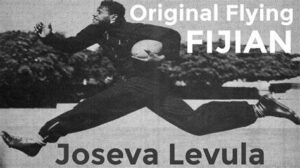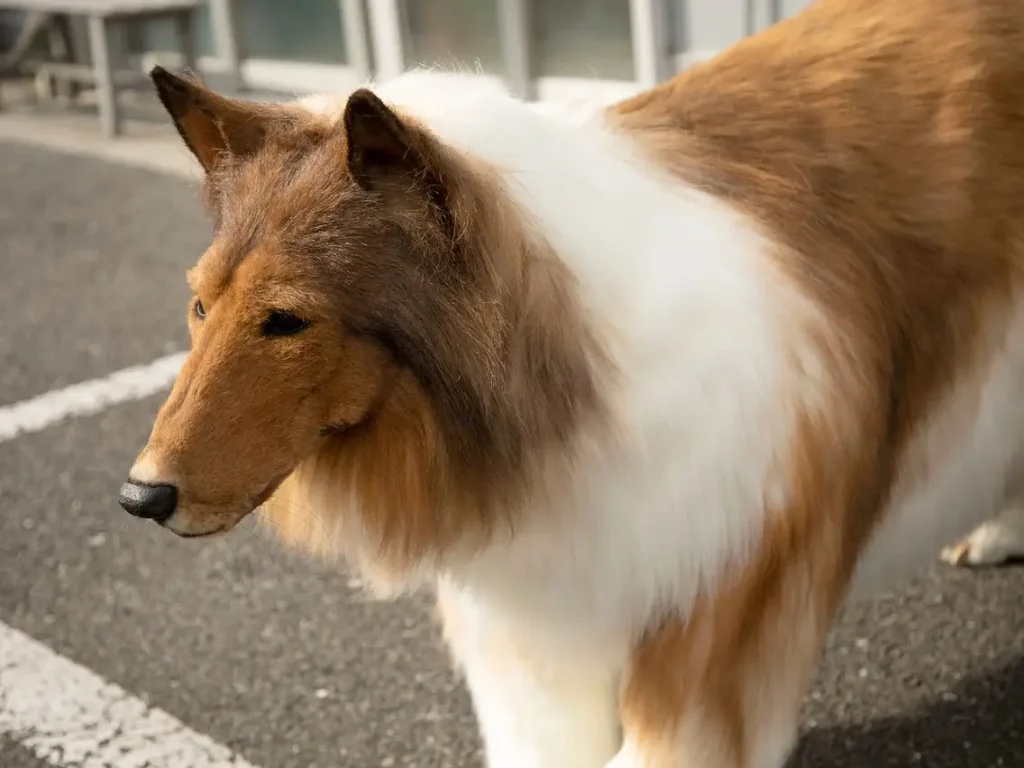THE ORIGIN OF THE NAME “FLYING FIJIANS”
Written by Alex Elbourne on September 21, 2023

Even if you don’t follow rugby, chances are you know this image of Joseva Levula is one that has become synonymous with Fijian rugby and more importantly, represents the ethos behind the way Fijians play the game. Apakuki Nalawa of Inside Out (Obligatroy promotional post here: Don’t forget their first live show is this Saturday!) posed this question on Facebook
This is the long version of the story, that I wrote in 2015 for Teivovo. ‘In programme notes for a Scotland Test match at Murrayfield against Fiji, the BBC’s rugby commentator Ian Robertson perfectly summed up the conundrum at the heart of Fiji rugby then, now and for all time to come: ‘to win in rugby you need eight piano lifters and seven piano players. But everybody in the Fiji team wants to be a piano player.’Robertson’s nod towards the incredible flair and joyous athleticism which is the Fiji game’s greatest strength (and enduring weakness) finds its most perfect expression in the decision of the Fiji Rugby Union to brand the 15-a-side national team as the Flying Fijians ahead of the 2003 Rugby World Cup.I was the FRU’s marketing manager in the early 2000s and would not be telling tales out of school if I said that we, at the FRU, felt a little embarrassed, ashamed even, not to have our own brand. Standing next to Manu Samoa and Ikale Tahi and of course looking up to the All Blacks and Wallabies, we were just Fiji. Little old, no-fancy-name Fiji.When inspiration finally came, the Flying Fijians ‘light bulb moment’ actually took almost 24 hours to power up. Strangely it was in large part thanks to a double murder that traumatised the country, and whose sheer brutality strongly harked back to Fiji’s violent pre-Christian history.At the time, my family and I lived in the residence of the late John Scott, the Red Cross director who had been a key intermediary in the desperate Parliamentary hostage crisis set off by George Speight’s 2000 attempted coup. His family home is one of the country’s best-known colonial-era properties: overlooking the capital, it commands panoramic views from the coast towards Pacific Harbour, right across Suva to the east and Nukulau, the island prison where coup leader Speight was cast.In July 2001 Scott and his partner had been murdered at the home we would eventually rent. Scott was immensely popular and well regarded, and more than a thousand people attended his funeral. The man eventually charged with the murders was found not guilty by reason of insanity and committed to the local psychiatric hospital.To try to come to terms with this tragedy, John’s younger brother Owen visited us on several occasions at the home he had grown up in. And he shared with us a small part of the family’s incredible history stretching back to the 1870s when John and Owen’s great, great grandfather arrived as a missionary just as Fiji’s warring chiefs were ceding their country to Queen Victoria. [I can’t possibly do justice to the Scott family history and all that the four generations did to bring Fiji forward as a nation – for that you need to read Owen’s book, Deep Beyond The Reef (Penguin NZ).]It’s important to understand that all of the hallowed trophies for which rugby teams in Fiji compete, even to this day, continue to bear testimony to the influence of colonial-era administrators and community figures who understood the appeal that this British public school sport would have in taming or at least channelling the war-like instincts of the so-called ‘natives’.Thus, the Farebrother-Sullivan Trophy remains the country’s most sought-after provincial rugby title, equivalent to New Zealand’s Ranfurly Shield (and was even a ‘home’ question to Bill Beaumont when he was a team captain on BBC’s Question of Sport in 1983). And the Escott Shield – donated by a pre-War World One governor – remains the most important silverware a rugby club in Suva can win.Sir Maurice Scott – John and Owen’s father – was similarly closely involved with Fiji rugby, serving as chairman and president of the FRU. Sir Maurice’s was a golden era, best remembered for Fiji’s first breakthrough appearances in the northern hemisphere: the 28-22 loss against an uncapped Wales side in 1964 and the 1970 tour of England, including the Gosforth demolition of the Barbarians, the majority of whom, playing in the British Lions a year later, would triumph in New Zealand.But it was clear that John and Owen’s relationship with their father was more than a little complicated. Sir Maurice was for many years Fiji’s leading criminal barrister, a Member of Parliament and, later, Speaker of the Legislative Council. He was outrageous and wickedly charismatic, but also a bully and tyrant to those who deserved better, and eventually was overwhelmed by alcoholism; he died embittered and alone in 1977.Part of the story that Owen had returned to Fiji to research was that, like many who called Fiji home – both vulagi and i-taukei – when World War Two was declared, Sir Maurice immediately volunteered to serve. In his case, as a pilot officer in the Royal Air Force.By chance at dinner with us one night, Owen mentioned that his father’s Spitfire bore the name, ‘The Flying Fijian’, stencilled on the side.That Flying Fijian thought lodged in some recess in my mind. [Another ‘Flying’ motif from Sir Maurice‘s story is that he would go on to marry the widow of Harold Gatty who, no less a figure than Charles Lindbergh had dubbed ‘the Prince of Navigators’, and was later the founder of Fiji Airways.]A day later I met with Dan Lobendahn, a former Fiji rep who owned two petrol stations affiliated with BP Oil, then sponsors of the FRU. Dan was running a little late so, as I waited, I looked at the mounted photos from his playing career in the 1970s. Over the door to his office, though, was one image that really took my breath away: a 50-inch framed photo of big-striding Jo Levula taken on the 1951 tour to New Zealand; Levula’s two tries helped Fiji beat the Maori 21-14 at Athletic Park.It was in that split second that the name on the side of Sir Maurice’s Spitfire fused in my mind with the Fijian flying up the wing at warp speed. But the full brilliance of the logo was only realised once Dominic Sansom, the country’s pre-eminent designer and graphic artist, had worked his production magic.It is Levula’s image that is the central feature of the Flying Fijian logo: in the way that his jaw is set, his eyes are ablaze, and he’s galloping hard up the field, you can quite believe the New Zealand Herald reporter who wrote:“[Levula’s] high-stepping action was allied to an aggressive temperament, and many a Caucasian face pales at the thunderous approach of a menacing figure whose eyes burned like the light of an express train.” Owen ScottPiers Scott.”
He even added a photo of the Flying Fijian Spitfire mentioned in his story.



